Sustainable and Strong: Lida Group’s Prefab Steel Structure Construction Focuses on Eco-Friendly, High Quality Metal Buildings
2025-Oct-16 16:05:03
By Admin
In an era marked by climate crisis and urbanization pressure, the construction industry stands at a crossroads: traditional concrete-heavy practices exacerbate carbon emissions and resource depletion, while prefabricated steel structures emerge as a transformative solution. Lida Group, a Chinese high-tech enterprise founded in 1993, has emerged as a global leader in this shift. Specializing in prefabricated steel buildings, container houses, and light steel villas, the company operates across 110+ countries with a clear mission: merging structural resilience with environmental stewardship. This article explores how Lida Group redefines industry standards through eco-friendly innovations and uncompromising quality control.
1. The Foundation: Lida Group’s 30-Year Legacy in Steel Structure Innovation
Lida Group’s journey began with a vision to modernize construction through industrialization. As a member of China’s Steel Structure Association and holder of ISO 9001, ISO 14001, and ISO 45001 certifications, the company has evolved from a regional manufacturer to a one-stop service provider covering design, production, construction, and maintenance. Its product portfolio spans industrial warehouses, residential villas, mining camps, and urban apartments—each engineered to balance performance and sustainability.
A key milestone in Lida’s development is its mastery of modularization. Unlike fragmented traditional construction, Lida’s prefabricated systems produce 80% of components in controlled factory environments, then assemble them on-site. This approach, honed over three decades, has enabled projects like the Qingdao Olympic Sailing Center and Qingdao Bay Bridge—landmark infrastructures that showcase the company’s technical prowess. Today, Lida’s monthly production capacity reaches 500 tons of steel structures and 3,000 prefab units, meeting global demand for efficient, durable buildings.
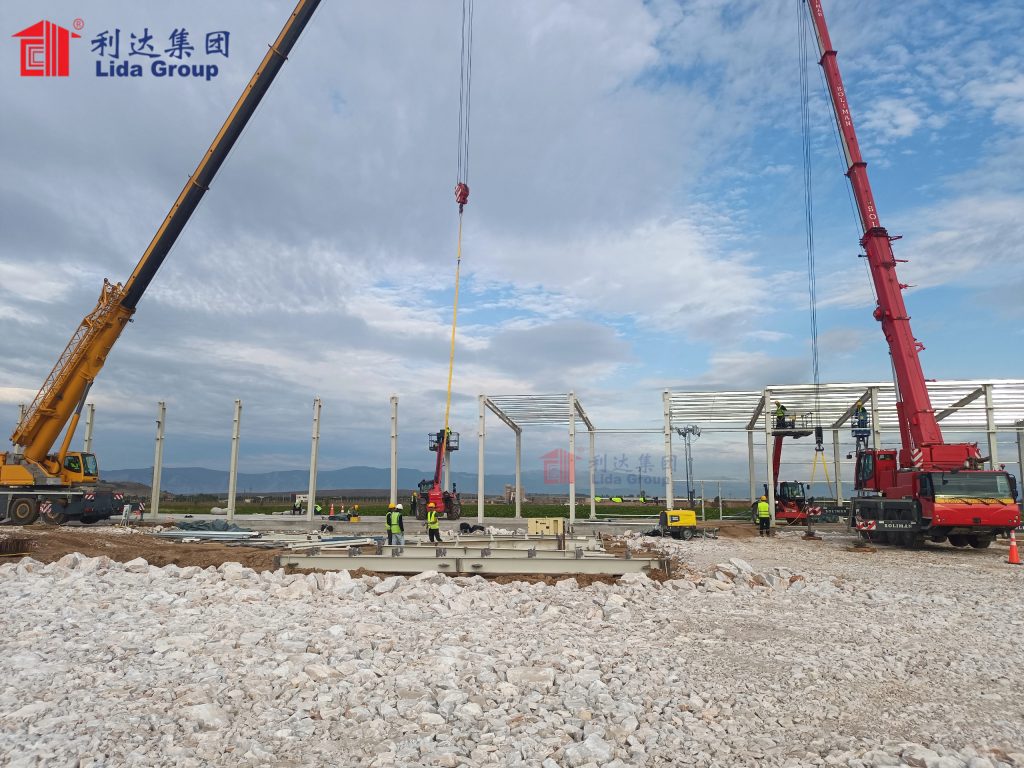
2. Eco-Friendly Innovation: Redefining Sustainability in Steel Construction
Sustainability is not an add-on for Lida Group but a core design principle. The company’s approach addresses the entire building lifecycle—from material sourcing to end-of-life recycling—with innovations that reduce environmental impact while enhancing functionality.
2.1 Circular Material Systems: The CircuSteel™ Advantage
Steel’s inherent recyclability is amplified in Lida’s patented CircuSteel™ process, which incorporates 98% recycled content in wall and roof components—nearly triple the 30% average of traditional builds. Each year, this diverts over 180,000 tons of industrial scrap from landfills, transforming waste into high-performance structures. For example, at BHP’s Chilean copper mine, Lida replaced 200 temporary cabins with container buildings made from on-site steel scrap, recycling 8,400 tons of material and cutting Scope 3 emissions by 12%.
Lida’s commitment to circularity extends beyond sourcing. Its closed-loop manufacturing system melts production offcuts for on-site reuse, eliminating waste. The company’s ISO 14064-3 certification verifies a 72% lower carbon footprint per ton of steel compared to virgin alternatives—a critical metric in the fight against climate change. Even at the end of a building’s lifespan, 95% of Lida’s steel components can be recycled without quality loss, creating a truly circular economy model.
2.2 Energy Efficiency: From Passive Design to Renewable Integration
Lida’s buildings are engineered to minimize operational energy use through advanced insulation and renewable energy compatibility. Its light steel villas, for instance, use EPS/rock wool sandwich panels (75–150mm thick) with an exterior wall heat transfer coefficient of just 0.417 W/m²K—far below global energy efficiency standards. In extreme climates, this translates to tangible results: the company’s Eastern European mountain camp, designed for -45°C winters, maintains stable indoor temperatures without excessive heating, reducing energy consumption by 40% compared to traditional structures.
Going further, Lida integrates renewable energy infrastructure directly into building designs. Its modular roofs come pre-installed with solar channels supporting 400W panels per 40ft unit, while AI-driven microgrids balance solar, battery, and grid power. At Zambia’s Lumwana mine, 120 Lida container buildings generate 1.2 MWh of solar energy daily—enough to power offices and electric vehicles—cutting diesel use by 78% and saving $420,000 annually in fuel costs. These systems are built to withstand harsh conditions, with wind-resistant mounts capable of enduring 150 km/h gusts common in open-pit mines.
2.3 Water Stewardship: Innovations for Arid and Remote Environments
Water scarcity plagues 60% of global mining and construction sites, prompting Lida to develop integrated water management solutions. Its modular complexes feature greywater loops that filter shower and sink water for non-potable uses, such as irrigation and equipment cleaning. In desert regions, the company deploys patented atmospheric water harvesters extracting 500 liters of water daily from air humidity.
A standout example is Rio Tinto’s Australian outback project, where a 150-person Lida camp reduced freshwater withdrawals from 28,000 liters to 4,200 liters per day—eliminating the need for water truck deliveries entirely. AI-powered leak detection systems, which pinpoint pipe failures within 15 seconds, further minimize waste. These innovations not only conserve resources but also reduce project costs and logistical complexity in remote areas.
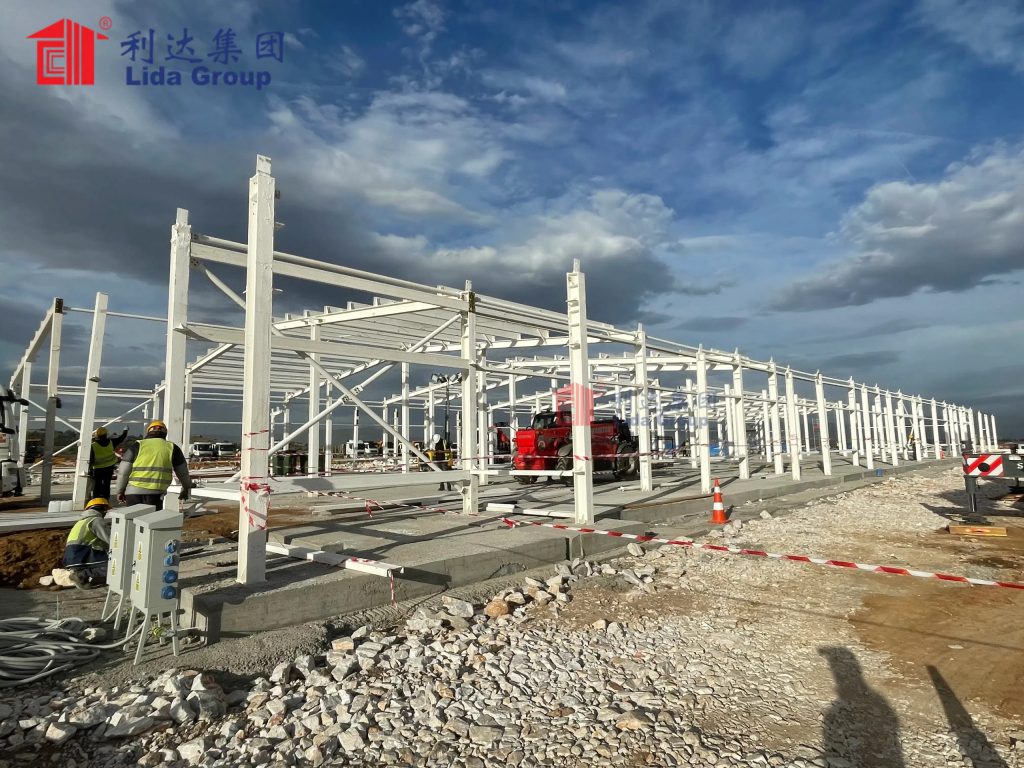
3. Uncompromising Quality: Building Resilience Through Engineering
Sustainability means little without structural integrity. Lida Group’s buildings are designed to endure extreme conditions, from typhoons to seismic activity, while maintaining long lifespans. This commitment is embedded in every stage of production, from material selection to third-party certification.
3.1 Premium Materials and Precision Manufacturing
Lida’s core structures rely on high-strength Q345B steel—an alloy known for its tensile strength and corrosion resistance—reinforced with galvanized cross supports and purlins. For critical applications like mining camps, the company uses 8mm AR450 steel at stress points and Kevlar-infused wall cavities to achieve ATEX Category 1 Zone 1 explosion-proof certification. These materials are subjected to rigorous testing: each steel batch undergoes ultrasonic inspections for internal defects, while galvanization layers are measured to ensure compliance with EN 1090 standards.
Factory production further guarantees quality. Lida’s automated assembly lines cut steel components to tolerances of ±0.5mm, far exceeding on-site construction precision. Prefabrication also eliminates weather-related delays and material waste—issues that plague traditional building. For the Cebu City, Philippines Apartment Hotel, 33 modular units were produced in 25 days and assembled on-site in weeks, with zero material waste.
3.2 Performance Testing and Global Certifications
Lida’s buildings undergo exhaustive performance testing to meet regional and international standards. Its steel structures achieve 8-degree seismic resistance and can withstand wind loads of 1.5 kN/m²—critical for typhoon-prone areas like the Philippines and coastal mining sites. Fire resistance is equally prioritized: intumescent coatings expand 40x at 300°C, maintaining structural integrity for 180 minutes at 1200°C, while FM-200 suppression systems automatically activate in case of fire.
These capabilities are validated by global certifications, including CE, BV, SGS, and ISO 9001:2015. For example, the company’s C-purling components, used in roof support systems, meet Qatar’s strict construction codes—testament to its ability to adapt to regional regulatory requirements. Such certifications have made Lida a trusted partner for international projects, from European mountain camps to African mining sites.
3.3 Longevity and Low Maintenance
Lida’s focus on quality translates to exceptional durability. Its steel structures boast a lifespan of 50+ years, while container-based buildings last 25+ years with minimal upkeep. Galvanized steel and ceramic nanocoatings protect against corrosion in humid or acidic environments, such as coastal regions and mining sites. In the Philippines’ tropical climate, Lida’s modular apartment hotel has withstood multiple typhoons without structural damage, requiring only cosmetic maintenance after five years.
This longevity delivers economic value: while initial costs for prefabricated steel buildings are comparable to traditional construction, lower maintenance and energy expenses reduce lifecycle costs by 30–40%. For businesses and communities, this means predictable budgets and reduced environmental impact over decades.
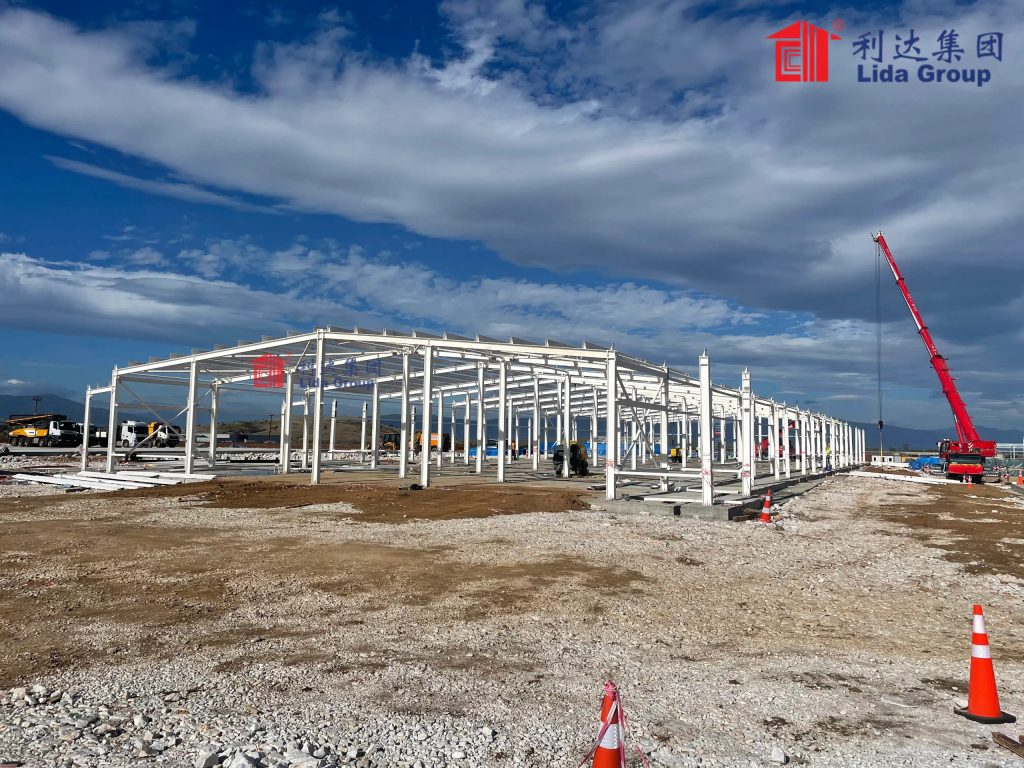
4. Global Case Studies: Sustainability and Quality in Action
Lida Group’s innovations are not theoretical—they are proven in diverse projects across continents. From urban apartments to remote mining camps, these case studies demonstrate how the company’s approach adapts to unique challenges while delivering consistent results.
4.1 Eastern European Mountain Camp: Resilience in Extreme Climates
Located in a remote Eastern European mountain region, this project required a sustainable camp capable of withstanding -20°C winters, snowstorms, and strict EU environmental regulations. Lida’s solution combined steel-frame public areas (cafeteria, activity center) with container-based guest rooms, all prefabricated in China and shipped as flat packs. Key features included:
- 75mm rock wool insulation for -45°C to 50°C temperature resistance;
- Pile-free foundations to avoid habitat disruption;
- Solar-ready roofs and rainwater collection systems meeting EU green standards;
- Bolted connections reducing on-site labor by 40%.
The project was completed 30% faster than traditional builds, with a 15-year lifespan and minimal maintenance needs. A client representative noted: “Modular design allows seasonal expansion, and insulation performance exceeds expectations.”
4.2 Cebu City, Philippines Apartment Hotel: Urban Sustainability
In densely populated Cebu City, Philippines, Lida transformed 33 flat-pack container units into a three-story apartment hotel—demonstrating prefabrication’s potential for urban infill. The project addressed two critical challenges: rapid urbanization and tropical climate resilience. Innovations included:
- Corrosion-resistant steel framing to withstand typhoons and humidity;
- Customizable exterior finishes blending with local architecture;
- Modular partitioning for flexible unit layouts (short/long-term stays);
- Secondary roofing for enhanced waterproofing.
Completed in under a year, the hotel now serves both tourists and long-term residents, with a 50+ year design lifespan. Its success has spurred three more Lida projects in the Philippines, highlighting demand for sustainable urban housing.
4.3 Mining Camp Solutions: Safety and Sustainability Underground
Mining sites present unique risks—explosive dust, methane leaks, and seismic activity—that traditional buildings cannot withstand. Lida’s explosion-proof container complexes, deployed in mines worldwide, address these threats through multi-layered engineering. At a South American copper mine, the company delivered:
- Blast-resistant 8mm AR450 steel framing with pressure-relief channels;
- Intrinsically safe electrical systems (0.025 MJ energy limit) to prevent sparks;
- Static-control flooring and EMI shielding for detonation system protection;
- Methane monitoring linked to automatic ventilation.
These features have prevented accidents in high-risk zones, while sustainable design elements (recycled steel, solar power) have reduced the mine’s carbon footprint by 12%. For mining giants like BHP and Rio Tinto, Lida’s camps balance worker safety, regulatory compliance, and environmental responsibility.
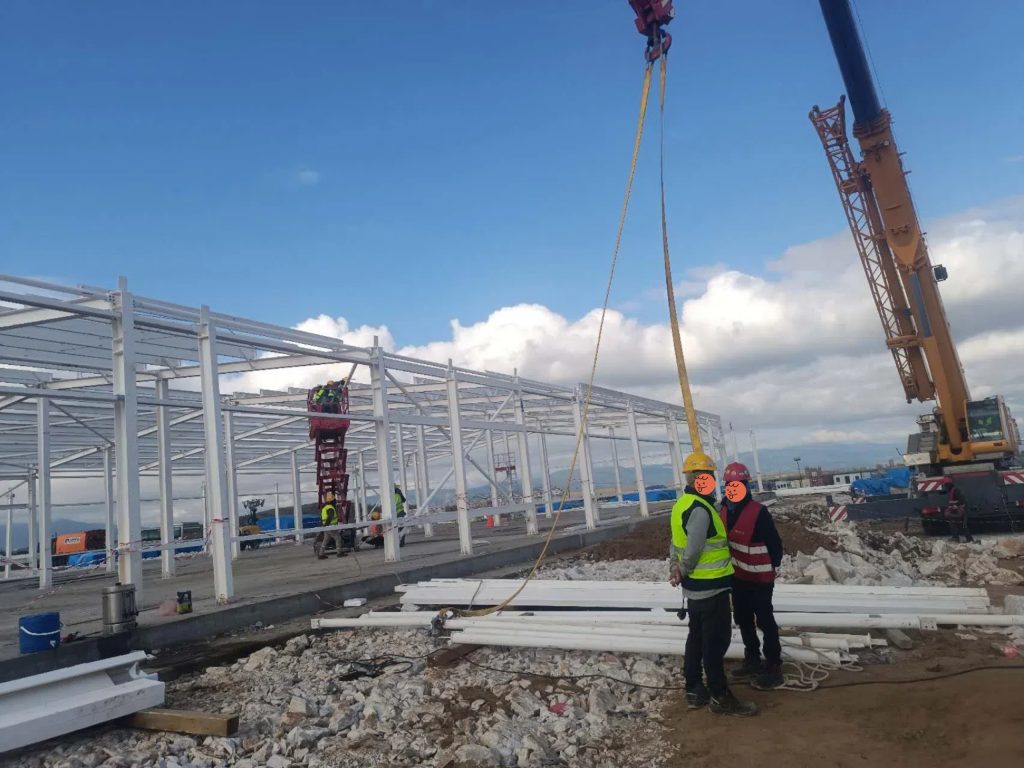
5. Industry Impact: Leading the Global Shift to Sustainable Construction
Lida Group’s success reflects a broader trend: the prefabricated steel structure market is projected to grow at 7.8% CAGR through 2030, driven by urbanization and carbon reduction goals. As a pioneer, Lida is shaping this shift through three key contributions:
5.1 Raising Sustainability Standards
By proving that high-performance buildings can also be low-carbon, Lida is challenging industry norms. Its 98% recycled steel use and 72% lower emissions set a benchmark for competitors, while its water and energy innovations demonstrate that sustainability enhances—rather than compromises—functionality. The company’s participation in China’s “Dual Carbon” (dual carbon) initiative further positions it as a model for green construction.
5.2 Advancing Construction Industrialization
Lida’s modular approach is accelerating the shift from on-site to factory-based construction—a critical step toward reducing the industry’s 30% waste rate. Its automated production lines and standardized components have inspired smaller manufacturers to adopt industrialized methods, while its one-stop service model simplifies adoption for clients new to prefabrication.
5.3 Expanding Access to Resilient Housing
In disaster-prone regions and developing countries, Lida’s buildings offer a lifeline. Their rapid assembly (8 hours per container unit) makes them ideal for post-disaster relief, while their durability ensures long-term habitability. In Africa and Southeast Asia, the company’s affordable steel villas are addressing housing shortages without sacrificing quality or sustainability.
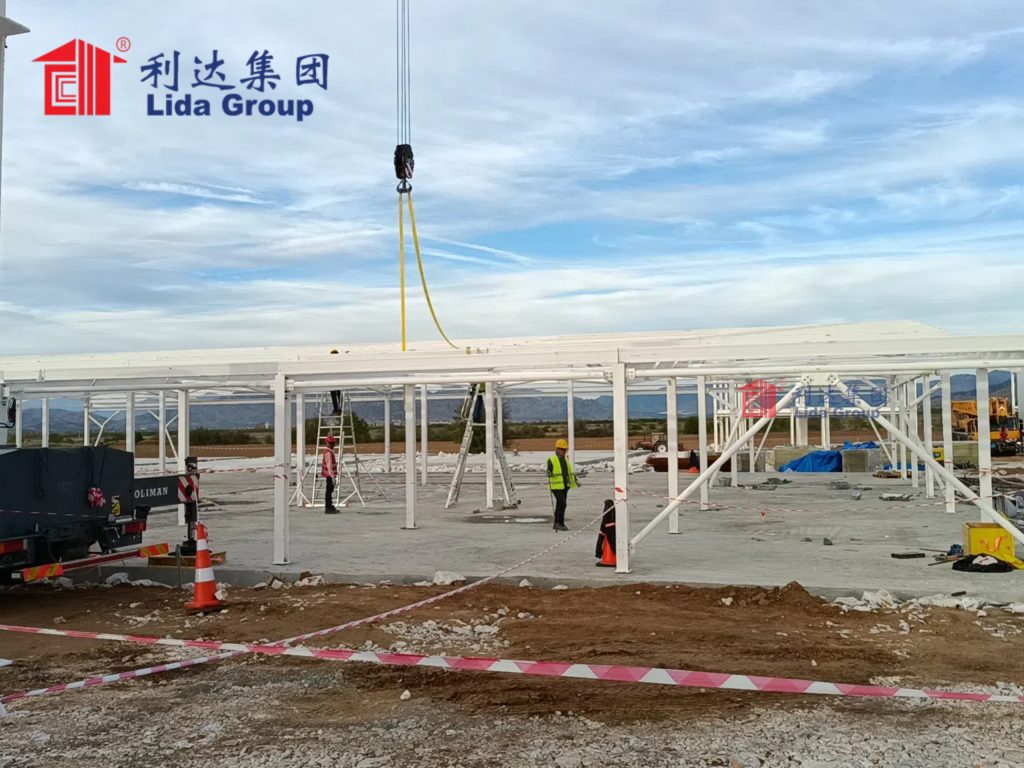
6. Future Outlook: Innovation on the Horizon
As the construction industry evolves, Lida Group is poised to lead with three strategic priorities:
6.1 Smart Construction Integration
The company is investing in BIM (Building Information Modeling) and IoT (Internet of Things) to enhance efficiency. Future buildings will feature real-time structural monitoring, AI-optimized energy use, and predictive maintenance—further reducing costs and environmental impact.
6.2 New Material Development
Lida’s R&D team is exploring advanced composites, such as carbon-fiber-reinforced steel, to reduce weight while maintaining strength. The company also aims to increase recycled content to 100% by 2030, eliminating reliance on virgin materials.
6.3 Market Expansion in Emerging Sectors
With a focus on rural housing, large-scale infrastructure, and smart green buildings, Lida is targeting high-growth markets. In Europe, it plans to expand modular apartment projects to address housing shortages, while in Africa, it will scale mining camp solutions to support sustainable resource extraction.
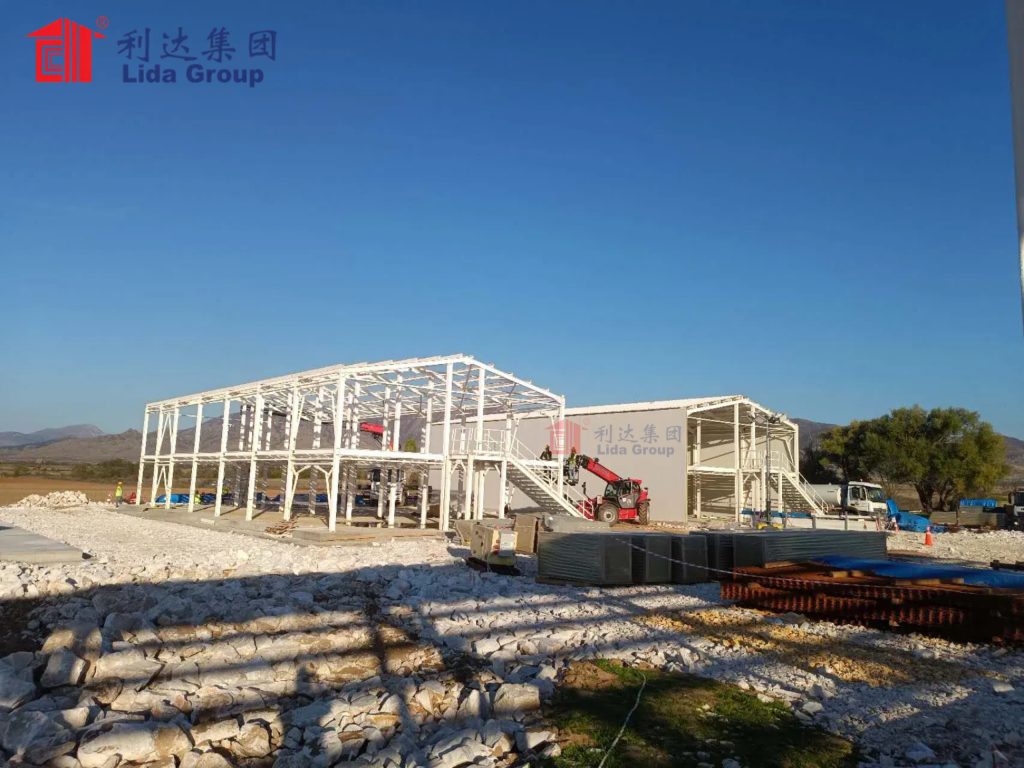
7. Conclusion
Lida Group’s 30-year journey demonstrates that sustainability and strength are not competing goals—they are complementary. Through its Circus Steel™ process, energy-efficient design, and precision engineering, the company has redefined what prefabricated steel buildings can achieve: structures that withstand extreme conditions, reduce environmental impact, and deliver long-term value.
From Eastern European mountains to Philippine cities, Lida’s projects prove that sustainable construction is not just possible but profitable. Its global certifications, diverse case studies, and commitment to innovation have made it a trusted partner for businesses, governments, and communities worldwide. As the world races to meet climate targets and urbanize sustainably, Lida Group stands as a beacon—proving that the buildings of the future can be both strong and green.
In an industry often criticized for its environmental footprint, Lida Group offers a blueprint for change: one steel module, one sustainable innovation, one resilient building at a time.

Related news
-
Innovations in Prefab Steel Structure Construction Allow Lida Group to Deliver High Quality Metal Buildings at Unbeatable Prices
2025-10-15 17:49:49
-
Why Agricultural and Commercial Sectors Trust Lida Group for High Quality Metal Buildings Using Low Cost Steel Frames
2025-10-16 11:39:13
-
Lida Group Achieves Perfect Balance in Prefab Steel Structure Construction with High Quality, Low Cost Steel Frame Houses
2025-10-11 17:23:10
contact us
- Tel: +86-532-88966982
- Whatsapp: +86-13793209022
- E-mail: sales@lidajituan.com


